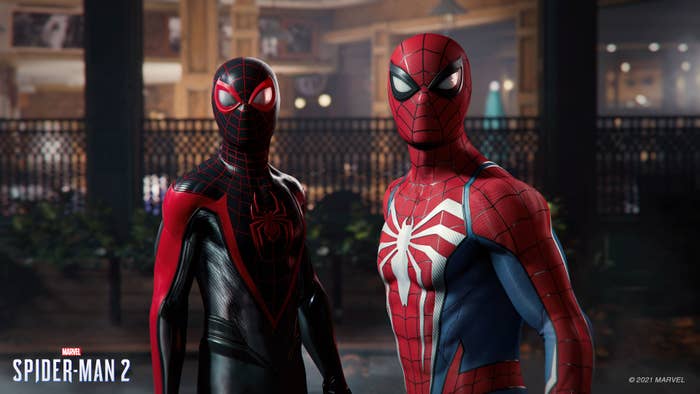
Marvel's Spider-Man 2 does not reinvent the wheel, or even alter the wheel, really. It is, at its core, the same game as Marvel's Spider-Man (2016) and Marvel's Spider-Man: Miles Morales (2018), with better graphics, bells, and whistles. The pleasures you derived from those games are the same ones you will get from this one. But that is a mild criticism; if you've played either of the last two games, then you know that "more-of-the same" is a reasonable and safe approach to developing such a highly anticipated sequel. Why fix what isn't broken? Why improve upon something that players said was perfect the first time around?
Back in 2016, critics lauded Marvel's Spider-Man for its streamlined, elegant simplicity. The developers' approach prioritized 'feel' over complexity and challenge; when Spidey dove off buildings, the scenery's colors bled together to create the illusion of speed. The web-swinging was so intuitive—so fun, elastic, and empowering— that a player would rather swing to a location across Manhattan than Fast-Travel to it. The fight sequences were a feast of sensory detail—a sickening thud for every head kick, a slow-mo reversal for every Perfect Dodge.
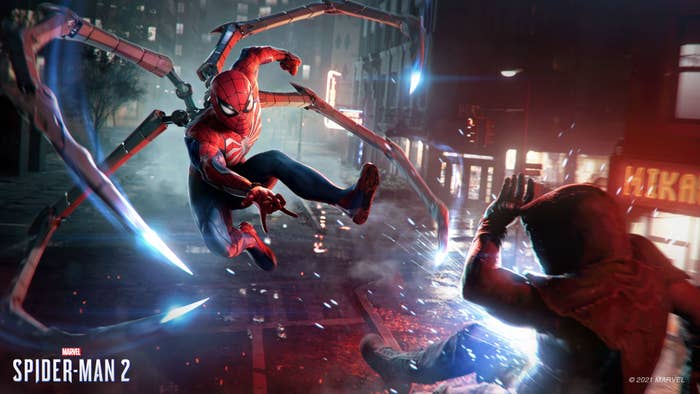
The visual and auditory design reinforced and exaggerated even the most basic gameplay mechanics, so you always felt superhuman, even when engaged in the mundane. "If it came easily to Spidey," the developers seemed to reason, "it should come easily to the player." And it did, which in turn strengthened our emotional connection to the characters.
The web-swinging in Spider-Man 2 is the same as it was in Spider-Man 1 (read: it's incredible). It has one new add-on—you can now glide over New York with web wings that are built into your suit. Gliding gains the most utility when you come across an air current, which propels you across the map at top speed. In the prior Marvel Spider-Man games, you only had Manhattan to explore. Now, you have three boroughs: Manhattan, Queens, and Brooklyn. The air currents allow you to move easily from one borough to the next by crossing over the East River. Otherwise, it's usually preferable to swing instead of glide.
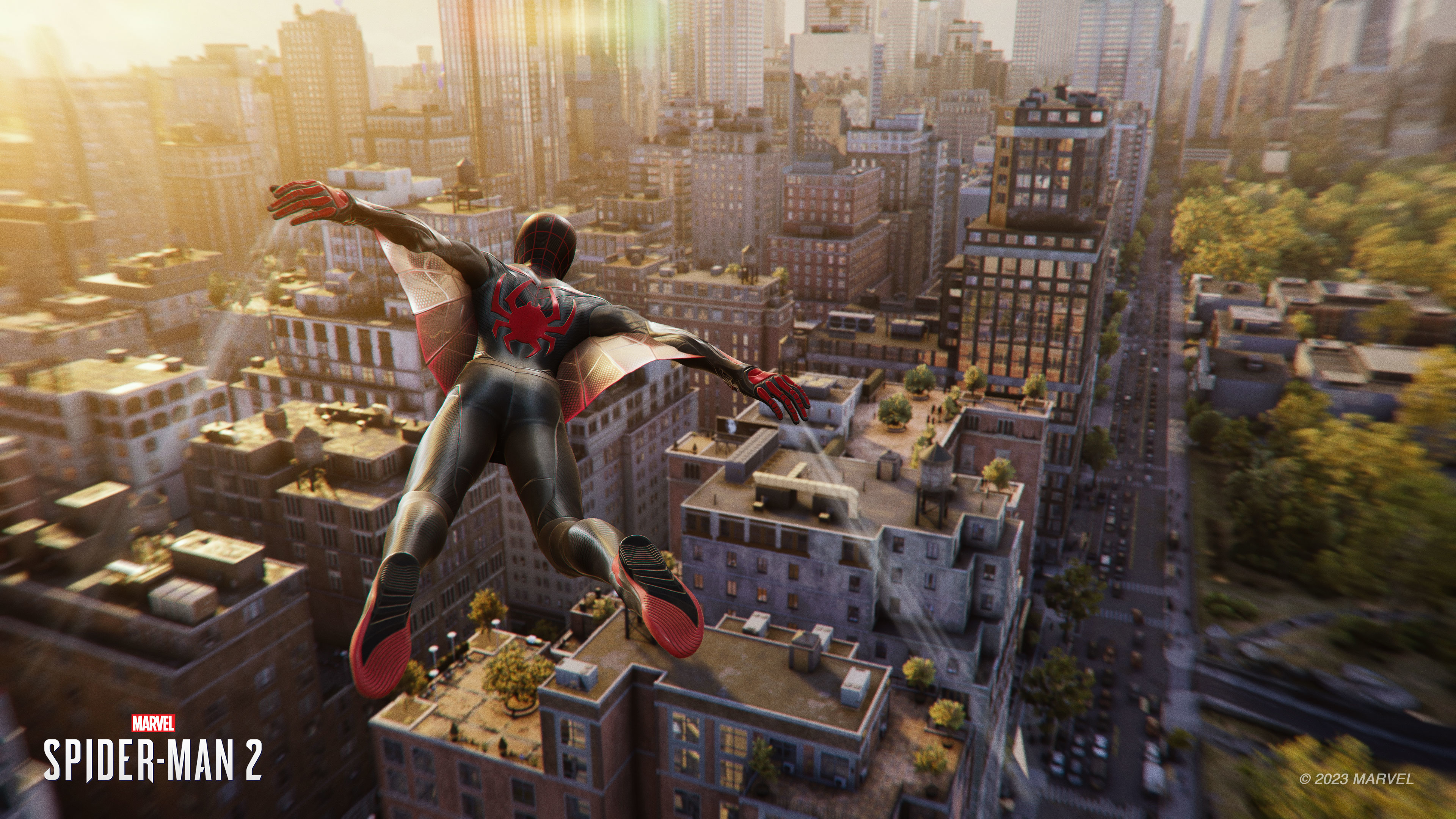
The stealth in Spider-Man 2 is more inventive than it was in the first game. You can now create a web tightrope from one wall to the other, allowing you to get the drop on your opponents. This is a lifesaver in the massive gang hideouts, where the guards are walking their patrol routes far away from where you're perched. You have a choice on how to clear a given area, and are not locked into a predetermined routine.
When compared to Spider-Man 1, the combat in Spider-Man 2 is better by how it introduces a new parrying system—you no longer dodge everything. Instead, there are some heavy attacks, with a wide, sweeping range, that must be parried, which will stun the opponent and leave him open to a follow-up attack. This mix of strategies enhances the game's boss fights, which feel more strategic and thoughtful rather than simply hitting the dodge button whenever your Spidey Sense tingles.
Additions are nice. But unfortunately, several of the old gadgets, which I loved in the prior games, are no longer there. An unfortunate side effect of eliminating the weapons wheel—of streamlining everything and mapping every gadget to its own button—is that it sacrifices variety. There's no Web Bombs or Trip Mines or Impact Webs or Holo-Drones. I love the new stuff the developers put in. But I wish they were in addition to what was already there, rather than replacements.
You swing, fly, stealth, and fight all over NYC to progress the main story mode, which is marked by a yellow icon on the map. Along the way, there are smaller, ancillary tasks you can complete—lab experiments, photography, helping out random strangers, and extensive side-plots with supporting villains—which give you tokens to upgrade your weapons and web shooters, unlock new costumes, and learn new skills, by way of experience points.
Experience points are relatively easy to come by—just fighting random crimes on the streets will net you a few hundred in less than five minutes. And the sheer number of side missions meant that I felt powerful and well-equipped at all times. If you ever hit a wall of difficulty, slow down, play some side missions, and up your experience and weapons before returning to the main task at hand.
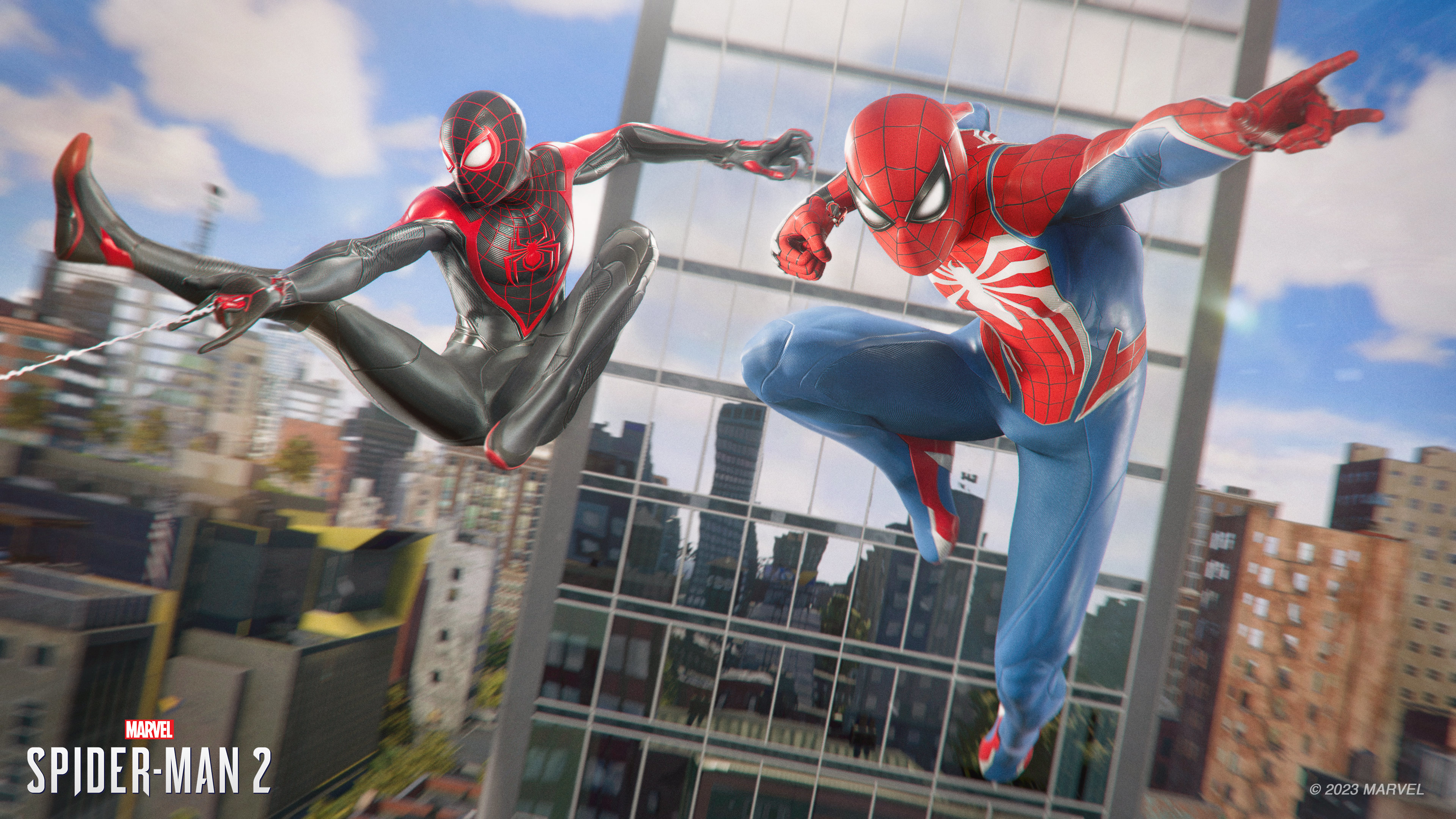
One of the game's main selling points is that you can play as either Peter Parker or Miles Morales: "Be Greater Together." And although you can switch between Miles and Peter at any moment when you're not doing a mission—and explore the city using either character—most of the main missions are specific to one hero. There are even certain side missions that require you to switch to Miles or Peter in order to access them. So although you can play as either character, it's not as flexible or freeing as it might appear at first glance. Occasionally, when you're fighting a random crime, the other Spidey will drop in and give you a hand. But much of Miles' and Peter's teamwork happens during cinematic cutscenes, rather than during the gameplay.
Abilities-wise, which Spider-Man is the stronger of the two? For most of the game, it's Miles by a considerable margin. In the context of the narrative, this makes sense; Miles is younger, and a huge part of Peter's character arc is getting older, confronting past traumas, and figuring out how to balance his adult life with the responsibilities of being Spider-Man. Both Peter and Miles have unique abilities—Miles has electric and Venom powers, and he can turn invisible. Peter has Iron Spider Legs sticking out of his back, which he can upgrade to do all sorts of offensive maneuvers. And late in the game, Peter gains access to Symbiote abilities, which are so heavy-hitting, and do such massive area damage, that it almost buffs him to be on par with Miles. Almost.
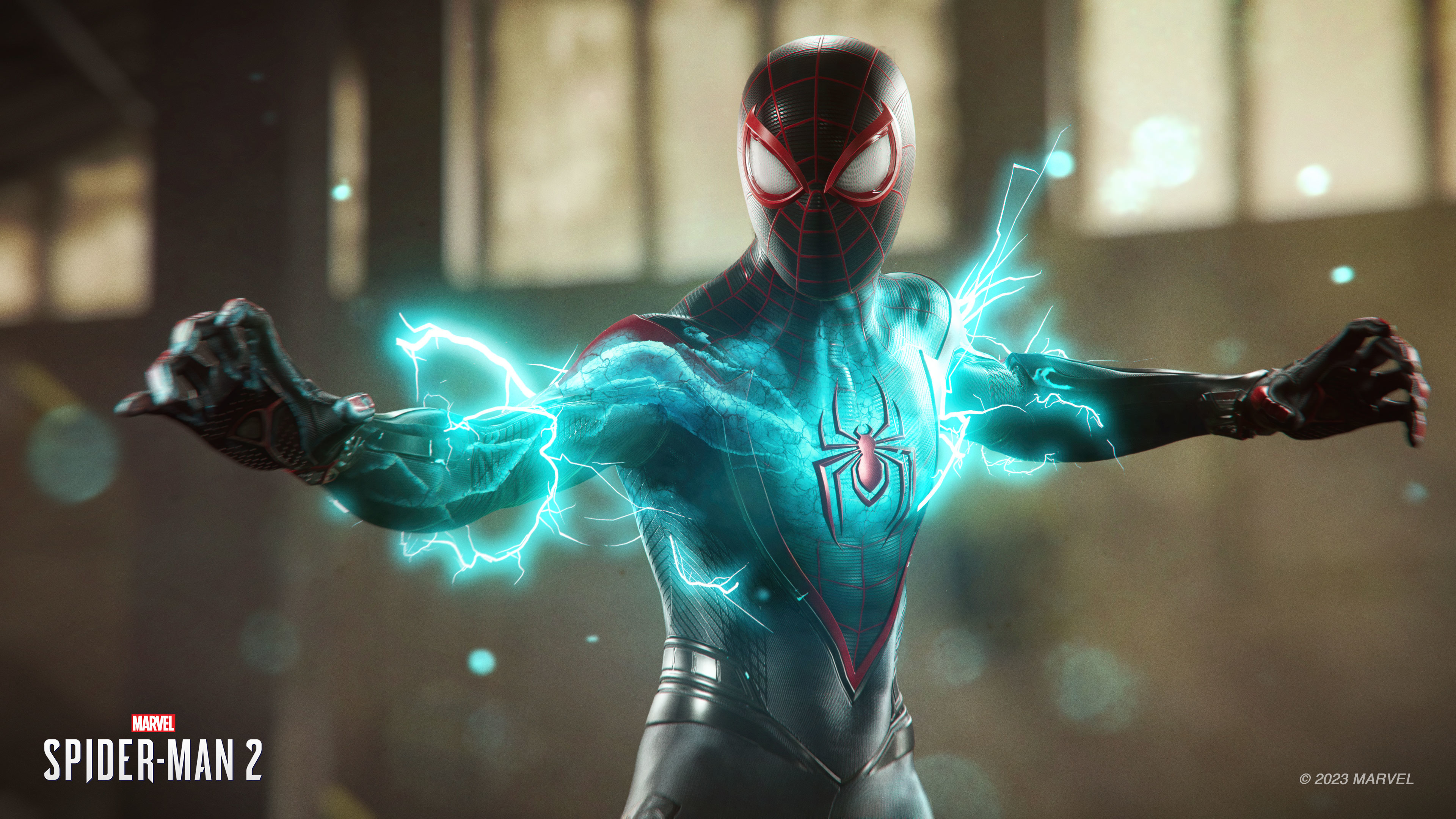
CAUTION: Plot discussion and spoilers ahead
The story opens with a massive, city-destroying battle that pits the two Spideys against Sandman, who's grown himself to the size of a skyscraper. This battle serves as a tutorial for new players, and it establishes what will become the game's running theme—Spider-Man's steadfast refusal to give up on anyone, no matter how corrupted or fallen. From here, the narrative splits into two distinct plot threads, which unite at the midpoint of the game to great effect.
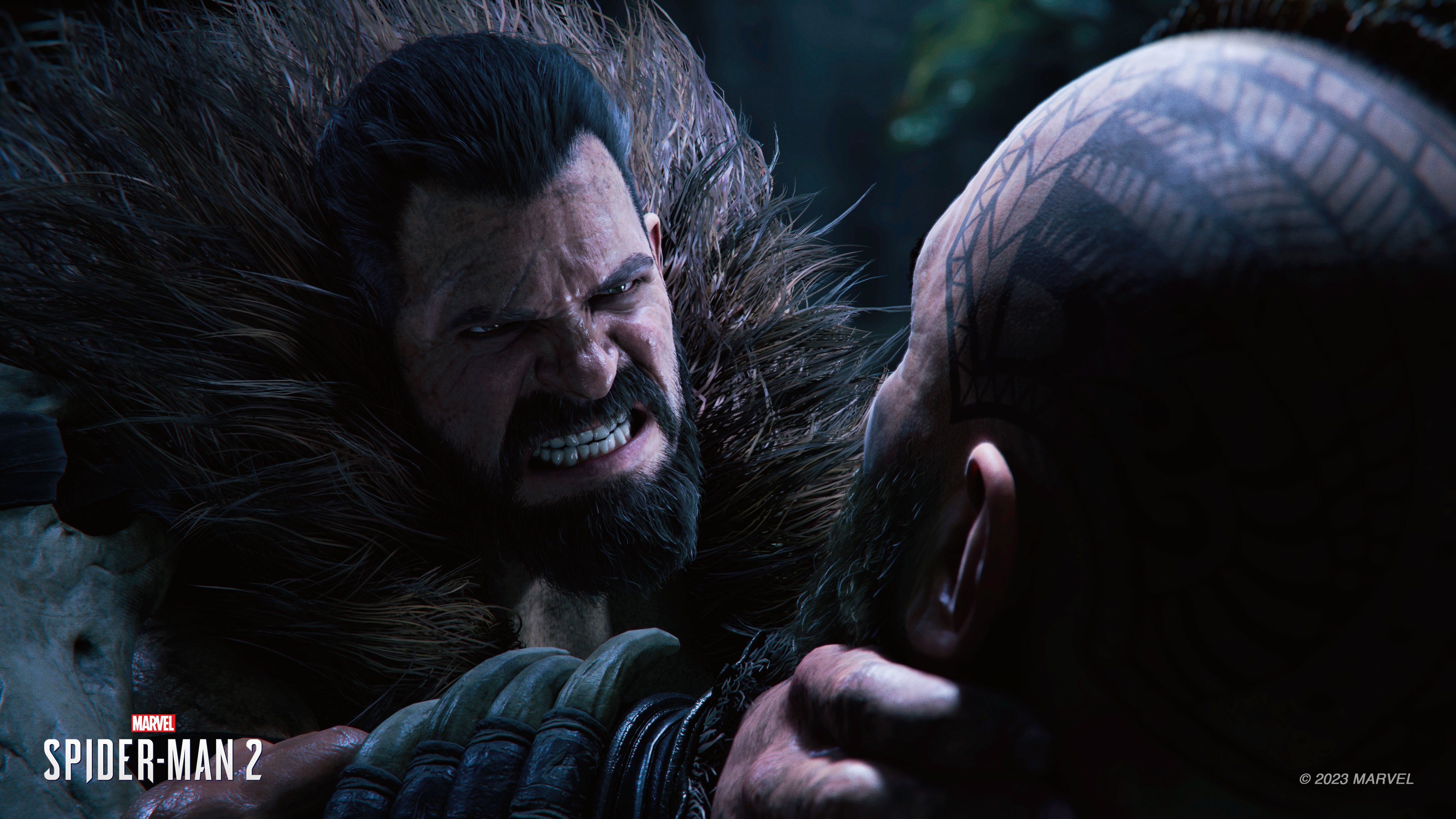
The first plot thread concerns Kraven the Hunter. He arrives in New York to partake in The Great Hunt, which amounts to tracking, stalking, and killing super-powered individuals. The second plot thread concerns Harry Osborn, Peter's and MJ's best friend, who has been miraculously cured of the Oshtoran Syndrome he inherited from his mother, thanks to an experimental black goo that's attached itself to Harry and enhances his physical abilities.
This goo being an alien Symbiote that will eventually corrupt Harry and become Venom is evident early on. So is the knowledge that Peter and Miles will eventually have to fight Venom, and thus risk killing Harry in the process. What makes this game fantastic, and what I will not spoil here, is the journey—the narrative development that gets the story to those turning points. The game held both my attention and my emotional investment. The writers took some creative license, but they stayed true to Venom's comic origin in the ways that mattered.
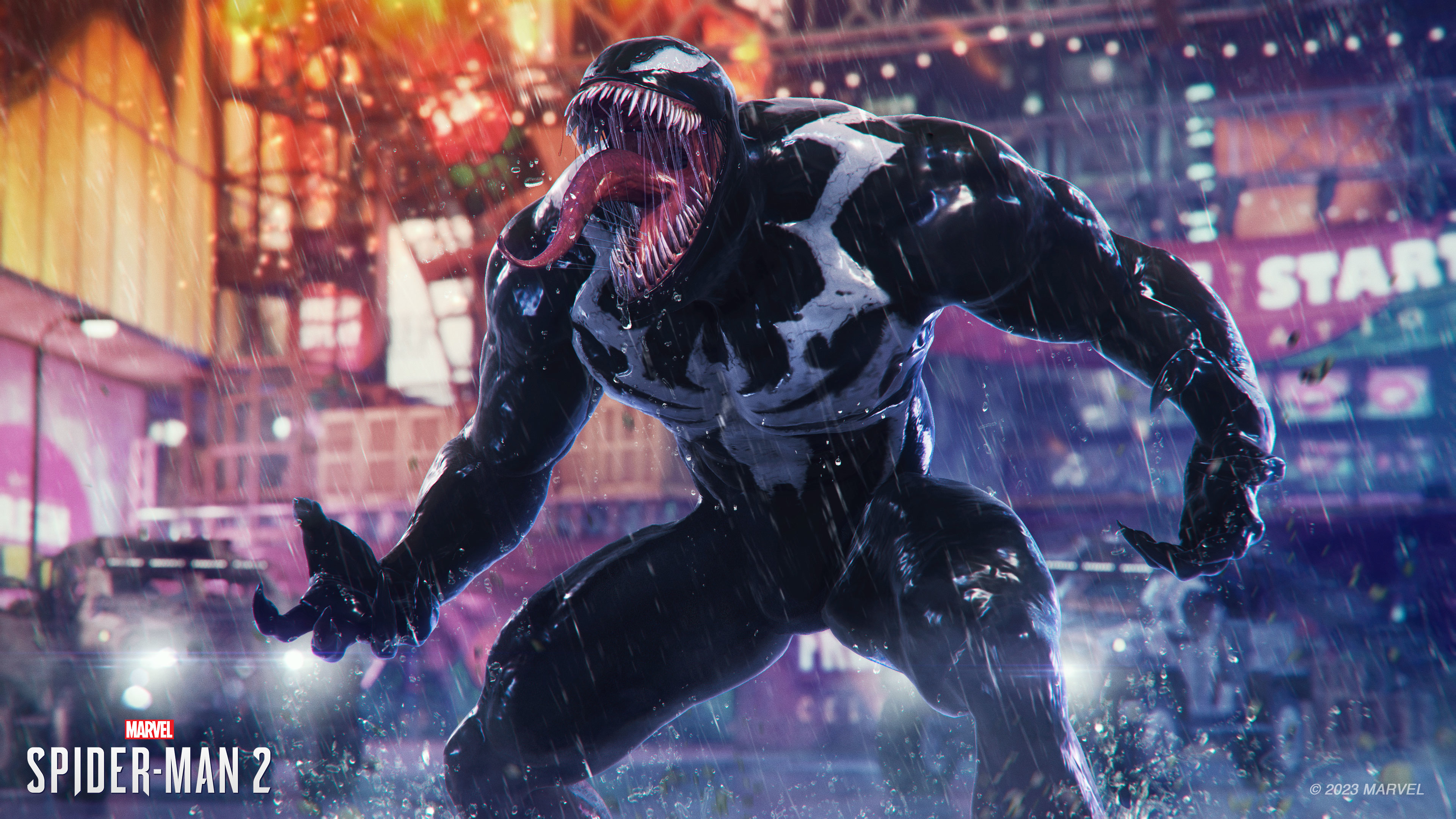
Marvel's Spider-Man (2016) was a game changer. Marvel's Spider-Man 2 is not. It is content to continue, faithfully, in its predecessor's footsteps, with little deviation. But don't get that twisted; it is working off an excellent template, and thus it is an excellent game, well worth the time and effort you place into it.
The way this game ends leaves little doubt: Marvel's Spider-Man 3 is forthcoming. And I'll be looking forward to it—this franchise's formula may be well-tread, but it still hasn't gotten old.


